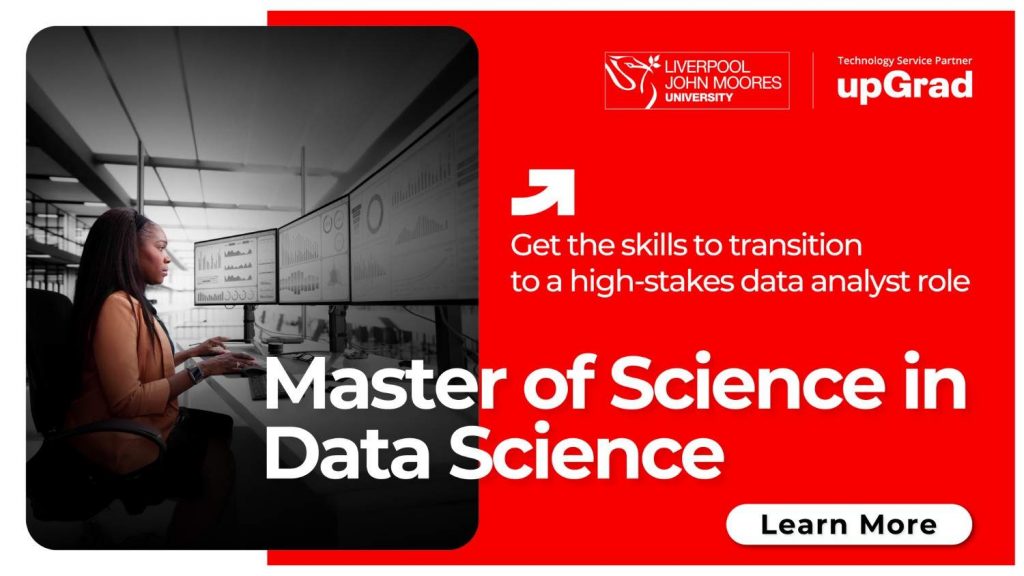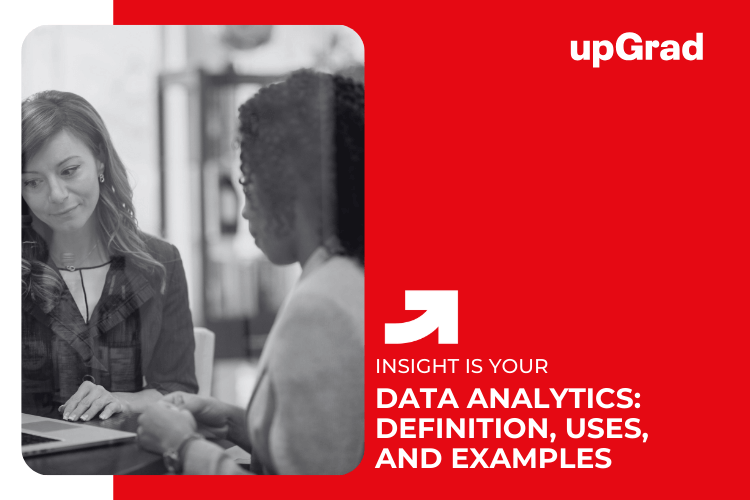Data analytics transforms how businesses, individuals, and governments make decisions in the digital world today. For example, 60% companies in the US use data analytics to drive business innovation. Companies that make data-based decisions have seen a 63% increase in their overall productivity rate.
The primary function of data analytics is to analyze raw data and identify patterns, insights, and trends. It then utilizes this information to help you develop more effective strategies and achieve better results.
Data analytics is utilized in various fields, including improving patient care in healthcare and predicting consumer behavior in the retail sector. There is no limit to the number of areas where data analytics can be applied and how effective it can be.
This blog will discuss what data analytics is and how it transforms raw information into actionable insights. It will also highlight why this is a skill that you must have in the digital-first economy today.
Source: Coherent Solutions
What is Data Analytics? Definition, Process, and Key Concepts
Data analytics Courses have become increasingly important in recent years, driven by the growth of analytics and big data tools. This is also the reason why there is such a high demand for skilled data analytics professionals in the US and the world over.
This is why data analysts in the US earn between USD 58,000 and USD 96,000 per year, with an average annual salary of USD 75,000.
Also read: Earn a Data Analytics Certification Online
Data Analytics Definition
The definition of data analytics states that it is the process of assessing raw data to uncover patterns, extracting meaningful insights, and then drawing conclusions to make informed decisions.
The most essential concepts of data analytics may be enumerated as follows:
- Business Intelligence
- Data Mining
- Machine Learning
- Data Visualization
Business intelligence is the applications and systems you use to collect, distribute, and organize data to support informed business decisions.
Data mining is the process of using automated software and systems to discover insights and patterns from vast datasets.
Machine learning is a part of artificial intelligence where algorithms use data to learn and perform tasks more effectively without requiring explicit programming.
Data visualization is the graphical representation of data that makes it easier for you to understand complex data.
Also read: Top Data Visualization Tools for Data Scientists
How Data Analytics Works (Step-by-Step Process)
An essential part of understanding what data analytics is to know how it works:
- It first defines the question or problem.
- Then it collects the relevant data.
- After that, it cleans and prepares the data. At this stage, it also addresses the missing information and inconsistencies in the data.
- Then it uses statistical techniques to analyze the prepared data and finds insights and patterns.
- Finally, it interprets the results, presents them virtually, and communicates actionable findings to you.

Importance of Data Analytics Today
The following are the most significant benefits of data analytics at present:
- Transforming raw data to actionable insights
- Helping organizations and businesses make data-driven and informed decisions that improve their operational efficiency
- Enhanced customer experiences and understanding
- Strategic planning
- Significant competitive advantage in a digital world that is evolving constantly
- Cost Savings
- Innovation
- Proactive Risk Management
- Industry-Wide Impact
Types of Data Analytics
The four main types of data analytics are descriptive, predictive, diagnostic, and prescriptive analytics.
They may be further explained as follows to offer you a better idea of what data analytics is:
| Type | Description | Purpose |
| Descriptive Analytics | Focuses on past happenings. | Offer detailed summaries of essential facts from historical data. |
| Diagnostic Analytics | Explores the reasons behind events. | Identify trends, causes, and correlations of specific problems and outcomes from past data. |
| Predictive Analytics | Answers questions on what can likely happen in the future. | Make forecasts and identify potential future outcomes and patterns by using past trends and data. |
| Prescriptive Analytics | Suggests specific actions to be taken and informs of the potential implications of those actions. | Use forecasts to make recommendations on the best courses of action to mitigate risks and/or help achieve specific goals. |
Examples of Data Analytics in Action
Some of the most notable examples of data analytics include Netflix’s personalized content recommendations, Coca-Cola’s targeted promotions, and PayPal’s real-time fraud detection.
Also read: Data Science for Business: Applications Across US Industries
How Different Industries are Using Data Analytics
Data analytics uses are not limited to any one industry, as you will see below:
- The retail sector analyzes customer purchase history and sales data to create targeted promotions and increase sales of products. It also utilizes it to segment customers more effectively.
- Banks use data analytics to analyze transactions and identify anomalies and suspicious patterns. This helps them prevent fraud.
- Hospitals track vital statistics, such as patient recovery rates, to optimize care delivery systems and identify trends in patient outcomes.
Also read: How Data Science is Transforming Real-World Decision-Making
How upGrad Can Help You Build a Career in Data Analytics
The online data science and analytics courses available through upGrad can significantly aid in realizing your professional aspirations in this domain. They help you enhance your skills and master the fundamentals of data science.
It also helps that the universities offering these courses are among the world’s leading educational institutions.
- Master of Science in Data Science, Liverpool John Moores University
- Executive Diploma in Data Science and AI, IIIT Bangalore
- Post Graduate Certificate in Data Science and AI (Executive), IIIT Bangalore
🎓 Explore Our Top-Rated Courses in United States
Take the next step in your career with industry-relevant online courses designed for working professionals in the United States.
- DBA Courses in United States
- Data Science Courses in United States
- MBA Courses in United States
- AI ML Courses in United States
- Digital Marketing Courses in United States
- Product Management Courses in United States
- Generative AI Courses in United States
FAQs on Data Analytics
Ans: Data analytics is the process of analyzing large datasets to discover hidden patterns and drive meaningful insights for informed decision-making.
Ans: There are four types of data analytics: descriptive, predictive, diagnostic, and prescriptive analytics.
Ans: You need both soft and technical skills to become a data analyst. In technical skills, you require proficiency in SQL, R, and Python.
Ans: Businesses use data analytics to transform raw data to actionable insights that help them enhance strategy, customer understanding, and operations.
Ans: The following are the most standard types of tools used in data analytics:
1. Programming Languages
2. Database Query Languages
3. Visualization Platforms
4. Big Data Frameworks
5. Statistical Software








